"[...] Κατευθύνομαι στη περιοχή Vedado στο Cemeterio de Cristobal Colon (Nεκροταφείο Xριστόφορου Κολόμβου). Ιδρύθηκε το 1876 και είναι γνωστό για τα πολλά περίτεχνα γλυπτά μνημεία. Μερικές από τις προσωπικότητες που ενταφιάστηκαν εδώ είναι o Maximo Gomez, Ibrahim Ferrer, Nicolas Guillen, Alberto Korda.
O τάφος όμως με τις περισσότερες επισκέψεις είναι αυτός της Μilagrosa. Μιας γυναίκας που τo 1901 πεθαίνει πάνω στη γέννα, αυτή και το μωρό της. Θάφτηκαν μαζί και το μωρό το τοποθέτησαν ανάμεσα στα πόδια της, έτσι ακριβώς όπως τους βρήκε ο θάνατος. Λέγεται, όμως, πως έπειτα από αρκετό καιρό όταν ανοίχτηκε ο τάφος, το παιδί βρέθηκε στην αγκαλιά της.
Γυναίκες από όλο τον κόσμο που δεν μπορούν να τεκνοποιήσουν επισκέπτονται τον τάφο της και η παράδοση λέει πως πρέπει να τον χτυπήσουν τρεις φορές πιάνοντας τον μεταλλικό κρίκο που είναι τοποθετημένος επάνω του.
Ακριβώς πίσω από τον τάφο υπάρχουν ένα σωρό μικρές μαρμάρινες ευχαριστήριες πλάκες προς τη Milagrosa. [...]" ----> Απόσπασμα από το Οδοιπορικό της Μυρσίνης Τσακίρη - "Κούβα, ο τελευταίος παράδεισος". (Διαβάστε ολόκληρο το οδοιπορικό, εδώ: http://barbudosdesierramaestra.blogspot.gr/2013/01/blog-post_31.html)
It was during the beginning of the last century when there were many Cubans who began an unusual worship in respect of the saint that is locally known as La Milagrosa (literally, the miraculous one). The growth of that faith in relation to the aforementioned and popular saint dates back to few years after her death which took place on May 3rd of the year 1901 after having given birth to her first and only son.
The abovementioned birth was carried out by the then Doctor Eusebio Hernçandez, who is now considered as the founding father of the Obstetrics in Cuba.
Unfortunately, the famous doctor was unable to change the course of the history as the birth not only ended with the decease of that mother as a consequence of a complication but also with the decease of her first-born child.
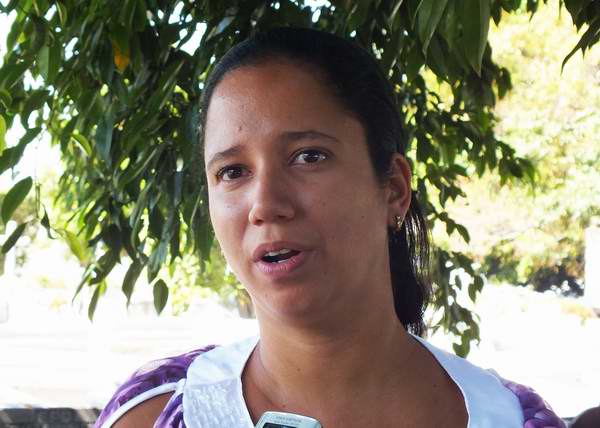
Amelia Goyri de Adot was the name of that woman who became the Milagrosa who was buried since her decease in the Colón Cemetery. The population has attributed countless healing powers to the unfortunate parturient by becoming her grave in the most visited place of that cemetery from Havana city; however, who was really Amelia Goyri before having become La Milagrosa?
The Colón cemetery’s historian, Zeni Pereira Hernández, explains the fact that the aforementioned young woman was the nephew of the Marquis and Marchioness of Balboa who were perhaps one of the famous families of the Cuban aristocracy.
“Amelia was orphaned at the eleven years of age when she lost her mother; therefore, her aunt named Mrs Inés became her guardian. Her uncle and aunt were always against her relationship with her cousin, Vicente Adot, because of his different social condition, then the 1995 war began in Cuba and Vicente went to the local jungle where it was taking place, then he returned home as a captain as soon as that armed conflict concluded. His military experiences made the Marquis and Marchioness of Balboa to reconsider their relationship and shortly after their marriage Amelia got soon pregnant.”
The popular legend tells that once the Amelia Goyri de Adot was exhumed, then the boy who had been buried at her feet was then found mysteriously on her arms and both of them even without any sign of physical deterioration. The history, which has lasted through years, has been added some unusual familiar coincidences.
It seems that Amelia and her sister Maria got married the same day and even got pregnant practically during the similar period of time and both of them had the same end due to a similar pathology. That coincidence reinforced the popular belief about a curse for those siblings who dare to get married. The historian Zeni Pereira Hernández explained the myth whether it could be true or simply not as the attitude assumed by Vicente Adot, after the death of Amelia, reinforced the myth.
“Not feeling resigned about his wife´s death, Vicente Adot used to visit the cemetery every single day to try to awake Amelia´s dormant soul by bringing her some flowers and touching up to three times the grave´s top-right ring, then he used to talk to her and never left that place without turning his back as a respectful signal. Moreover, that ritual has remained unchanged in time and people continue going there due to different reasons and they repeat the ritual without ever turning their back to the grave.” Zeni Pereira Hernández exlained.
Zeni Pereira Hernández told us as an interesting detail the fact that the tomb where Amelia was buried had been borrowed by a friend of Vicente as the widower never wanted his wife to be buried at the pantheon that belonged to the Marquis and Marchioness of Balboa who were always opposed to the marriage of the young couple.
Soon afterwards the death of Amelia, Adot sent a photo of the deceased to the artist, José Villalta de Saavedra in Italy so that he could sculpt a statue in the Carrara marble in remembrance of the death mother.
The abovementioned Italian artist concluded in 1909 the order requested by Vicente Adot when the artist made a funeral monument in which it was represented a woman, which was bigger in size than the image. Moreover, the statue was wearing a classical robe and holding a newly-born child on its left arm while a Latin cross stands on the opposite side of his body. It is worth mentioning that the artist José Villalta Saavedra is also the author of the three other female sculptures of the Colón cemetery on its facade, including the monument erected in remembrance of the eight students of medicine who were terribly shot on November 27th, 1871.
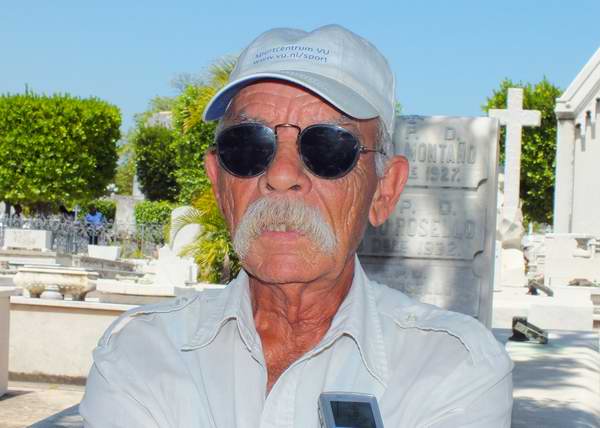
There are many people who daily visit the Milagrosa grave whether might be due to their religious faith, their scepticism or the curiosity.
“There is a higher attendance of the public just a few days before the mothers´ date.” Norberto Cabrera, who is the watchman of the tomb, said.
“The reality is precisely the fact that devotees of the saint attend there constantly as they belief in her healing powers. There are countless Cubans citizens who arrive in the Colón Cemetery regardless the distance from the places they live. Moreover, the fame of Amelia surpasses the borders and even the foreigners from many latitudes in the world, who want their prayers to be heard by the Milagrosa, visit the tomb; however, it is undoubtedly that the pregnant women are the most religious ones visiting her.” Norberto Cabrera highlighted.
“They bring flowers, funereal vases, little clothes of children and diapers in appreciation for the favours granted. There are people who sometimes come up to here with their newly-born baby right from the hospital as soon as their baby and his mother are discharged from there, for instance, and then they undress the baby here and that small clothe is left on the grave. All those clothes are given by us to the church which is located in 15th and 16th Streets in Havana city so that the monks and the priest there may donate them to the orphaned children.” Norberto Cabrera commented.
During the many hours that this article’s journalist was near of the Milagrosa tomb to complete the research, I could verify the many people who were visiting her due to different reasons whether they were asking her for a request or even fulfilling a promise before her. I present then for you all, up to three of the statements that those Cubans showed me kindly for me to carry out this journalistic work.
Interviewed number 1:
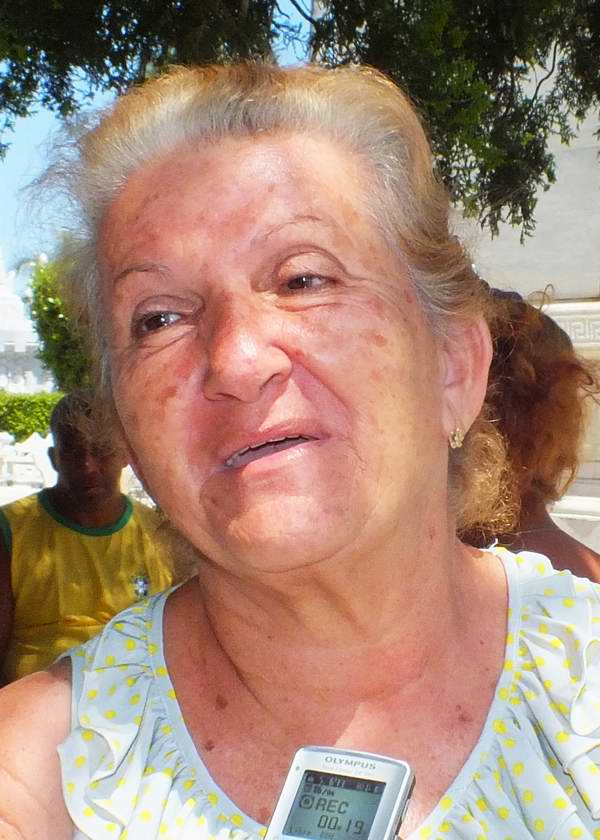
I come every now and then here given the fact that I had a little grandson who was always sick I was then feeling so despair that one day I came here to ask her for him and the Milagrosa granted me my request. The boy was healthy again and he is even a man at present. I was not from here as I was then living in the East part of the nation.” The interviewed said.
Which part of the nation´s east part were you from?
“I was from Manzanillo town.”The interviewed concluded.
Did you come then from Manzanillo to Havana city to visit the Milagroasa during that event?
“Yes, I did and she granted to me that request.” The interviewed concluded.
Interviewed number2:
“I asked a lot to the Milagrosa since I heard that my daughter was pregnant. The truth is the fact that I was truly worried as she is forty years of age; besides, my daughter is not longer living with me as she lives in the United States and once I knew that her natural birth had been all right and the fact that the boy was also healthy, then she sent me the small clothe she had dressed him on his first day of existence and I have just brought it here. I have to return with a bunch of roses during these days.” The interviewed said.
Then, do you believe in the Milagrosa?
“Yes, I do.” The interviewed concluded.
Interviewed number 3:
“All the ones who come here is due to we do have faith in the Milagrosa as she has heard our requests and has granted all we have asked her. Moreover, Faith moves everything and one comes here to request for health and both the happy birth of the boy and the mother´s safeness. The least one can do after being granted her help is precisely to visit her tomb and bringing flowers.” The interviewed said.
Do you often come here?
“Yes, I do and especially around the mothers´ date.” The interviewed concluded.
Do you come on that Sunday as well?
“Yes, I do, of course, taking into account that a beautiful party is carried out and violins are then played. I also come in January which was the moth when Amelia was born and I also return on May 3rd and 4th as that was the date of her death.” The interviewed concluded.
The popular legend always has a margin of error, so how real or not could be the history of the Milagrosa? I do think that we will never know it let alone the mystery for the sceptical people on the sad parturient´ s healing powers.
The truth is the fact that she is there as a support for those who believe in her; therefore, the decision about having faith in her depends on each individual, although any Cuban, whether he/she may be a believer or simply not could never deny that Amelia Goyri passed away to become the Milagrosa.
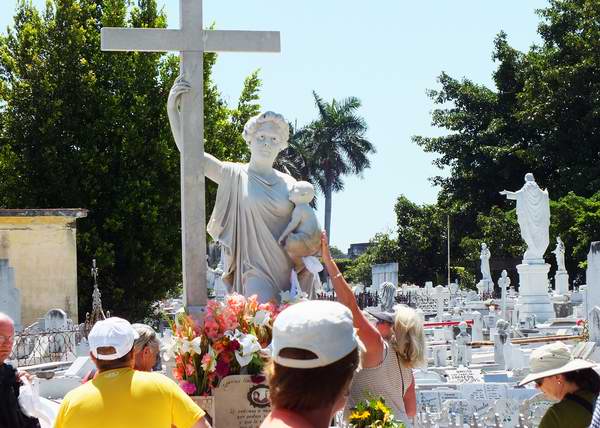
y Sarahi Garcia Contreras, Translated by: JC Caballero










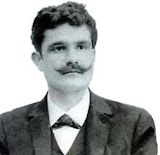




















.jpg)












